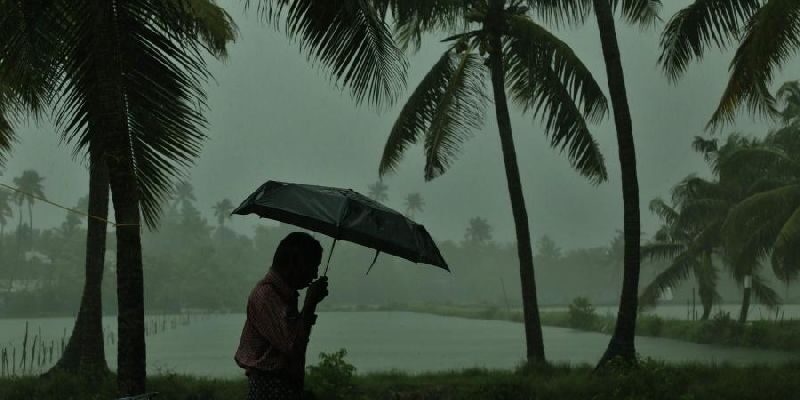Setting a record of sorts, Karnataka received 33 per cent excess rainfall, as the south-west monsoon extended till October from September, causing even flash floods, an official said on Monday."It has been an exceptional year for the state, as it received more rains than in the recent past, especially in its drought-prone northern region, as the 4-month southwest monsoon extended beyond September for a month, leading to 33 per cent excess rainfall," weather expert G. Srinivas Reddy told IANS.For the second consecutive year, the monsoon was very good, as the state received 27 per cent excess rainfall, recording 1,064 mm against 841 mm normal.
"Favourable conditions, including low-pressure depression in the Bay of Bengal and surface winds had extended the monsoon season up to October 28 from September 30, resulting in 176 mm rainfall against 133 mm across the state," asserted Reddy, a consultant to the Karnataka state natural disaster management authority.
The state's coastal region received 237 mm rain against 150 mm in October, registering 61 per cent excess, while northwest and northern regions recorded 176 mm against 107 mm, amounting to 65 per cent excess.
In the state's southern region, with 151 mm against 144 normal, the rainfall was only 5 per cent excess.
"After 4-months of vigorous monsoon, October is normally a dry month, which enables harvesting the kharif crop before Dasara and Diwali. For various factors, the monsoon spilled over a month, bringing excess rains," said Reddy.
Among the factors for excess rainfall during the extended monsoon were strong surface winds from east to west, moisture bearing clouds and conducive weather conditions in the state's coastal, southern and northern regions, noted Reddy.
Though the coastal region had 19 per cent excess rainfall, with 3,682 mm against 3,095 mm normal, the northern region had a whopping 49 per cent excess rains with 739 mm against 497 mm normal, while the southern region registered 20 per cent, with 817 mm against 682 mm normal.
"The data shows there is a shift in rainfall pattern across the state. The quantum, intensity and distribution of rainfall has varied across the regions in the state. The amount of annual rainfall and number of rainy days have increased in the southern and Malnad regions," pointed out Reddy.
The heavy rains in August, September and October before the monsoon withdrew on October 28 from the state led to flash floods in about 20 districts due to release of excess water from the rivers and dams from the neighbouring Maharashtra.As inflows into dams across Krishna, Tungabhadra and Cauvery rivers were more this time, more water was discharged into their basins as outflows.
"As Karnataka is heavily monsoon dependent for drinking water, irrigation and recharging its water bodies, excess rainfall will allow the state to reap a bumper kharif harvest, harness reservoirs for hydel power generation and supply drinking water to cities and towns across the state," added Reddy.

Reader Comments
to our Newsletter